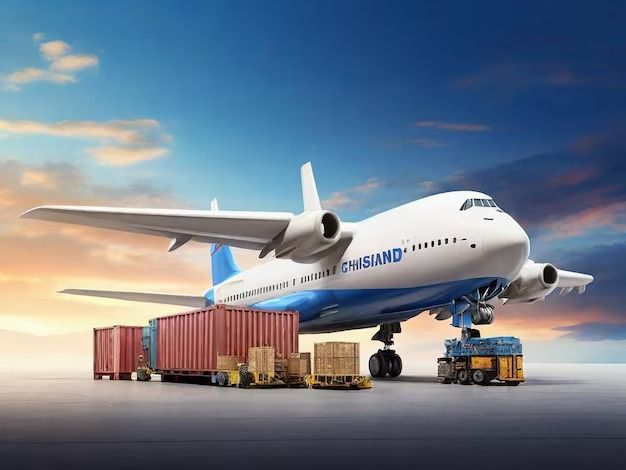- By TOP CHINA FREIGHT
- September 4, 2025
- Shipping
Table of Contents
Understanding the shipping cost from China to Canada is essential for businesses managing international trade. Costs vary depending on freight method, container size, cargo volume, and seasonal market trends. Moreover, hidden fees like customs charges, port handling, and fuel surcharges can significantly impact your final expenses. By analyzing cost factors and comparing shipping methods, importers can plan budgets, reduce risks, and ensure timely deliveries.

What factors influence shipping cost from China to Canada?
Several variables determine the overall cost:
1.Freight method
Sea, air, or express courier.
2.Container size
20ft, 40ft, or high cube.
3.Cargo type and weight
Fragile, oversized, or hazardous goods increase charges.
4.Seasonal demand
Peak months raise container prices.
5.Customs duties and taxes
Based on product category.
| Factor | Impact on Cost |
|---|---|
| Freight method | Air is faster but costlier; sea is economical but slower |
| Container size | Larger containers reduce cost per unit |
| Cargo weight | Heavier goods cost more |
| Peak season | 15–30% higher |
| Customs charges | Depends on HS code |
Additionally, fuel prices and global shipping demand continuously influence freight charges.
How much does sea freight cost from China to Canada?
Sea freight is the most common choice for bulk shipments.
Sea shipping is ideal for heavy goods like machinery or furniture. However, importers must also account for port handling, customs clearance, and insurance.
Is air freight a better option for shipping to Canada?

Air freight ensures faster delivery but at higher rates.
| Service Type | Cost (USD per kg) | Transit Time |
|---|---|---|
| Standard Air Freight | 4–7 | 5–10 days |
| Express Air | 6–12 | 3–5 days |
Air freight is suitable for urgent or high-value goods like electronics, medical supplies, or fashion items. However, bulky cargo becomes expensive, making sea freight more practical.
What are the pros and cons of express courier services?
Express courier shipping offers door-to-door convenience but at premium prices.
| Pros | Cons |
|---|---|
| Fastest option (2–5 days) | Cost per kg is high |
| Simplified customs clearance | Limited capacity for heavy goods |
| Real-time tracking | Higher fuel surcharge impact |
How does rail freight compare to sea and air shipping?
While less common, rail freight from China to Canada is possible via Eurasian routes and intermodal connections.
| Mode | Transit Time | Cost | Best for |
|---|---|---|---|
| Rail Freight | 18–25 days | Moderate | Mid-volume shipments |
| Sea Freight | 25–40 days | Cheapest | Bulk shipments |
| Air Freight | 3–10 days | Highest | Urgent goods |
Moreover, rail freight balances speed and cost but requires coordination with multimodal logistics partners.
What additional charges impact shipping cost from China to Canada?

Besides base freight, importers face several extra charges:
| Charge Type | Cost Range (USD) |
|---|---|
| Port handling | 100–300 |
| Documentation | 30–80 |
| Customs clearance | 100–250 |
| Cargo insurance | 0.3–0.5% of cargo value |
| Fuel surcharge | 50–150 |
Therefore, requesting all-inclusive quotes helps avoid hidden expenses.
What documents are required for customs clearance in Canada?

Proper documentation ensures smooth cargo entry.
| Document | Purpose |
|---|---|
| Commercial Invoice | Declares value of goods |
| Packing List | Details weight and volume |
| Bill of Lading | Confirms shipping contract |
| Certificate of Origin | Proves manufacturing country |
| Import Permit | Required for restricted goods |
| Customs Declaration | Mandatory for duties and taxes |
Additionally, incorrect paperwork can delay clearance and increase total shipping cost.
Case Study: Furniture Shipping to Toronto
A Canadian retailer imported 40ft of furniture from Guangzhou. Initially, LCL shipments caused delays and higher fees per unit. After switching to FCL sea freight, the company reduced average costs by 18% and achieved consistent delivery times. This demonstrates the importance of container selection and forwarder expertise in optimizing the shipping cost from China to Canada.
How can businesses reduce shipping costs effectively?
Practical strategies include:
- Consolidate shipments to fill containers.
- Choose off-peak seasons for booking.
- Negotiate long-term contracts with forwarders.
- Optimize packaging to fit more cargo.
- Use multimodal options for flexible pricing.
Moreover, investing in digital tracking tools helps reduce delays and operational inefficiencies.
Conclusion
Managing the shipping cost from China to Canada requires evaluating container options, shipping methods, customs fees, and seasonal fluctuations. Sea freight is the most economical for bulk goods, while air freight ensures speed for urgent deliveries. Importers can minimize expenses by consolidating cargo, booking early, and working with reliable freight forwarders. Ultimately, strategic planning ensures cost efficiency, timely deliveries, and a smoother supply chain.
Need a Shipping Quote?
If you want expert guidance and peace of mind, our team is ready to assist.
TJ China Freight offers tailored solutions to help businesses of all sizes ship more reliably from China.

FAQs
Q1:How can I estimate shipping cost from China to Canada?
Request a detailed quote from forwarders including freight, customs, and delivery charges to get accurate shipping cost from China to Canada.
Q2:What is the cheapest way to ship from China to Canada?
Sea freight FCL is the most economical option, helping reduce overall shipping cost from China to Canada for bulk cargo.
Q3:Are customs duties included in freight charges?
No, customs duties and import taxes are separate costs, which must be considered in the total shipping cost from China to Canada.
Q4:Can I lower costs by consolidating shipments?
Yes, consolidating cargo into a full container helps reduce per-unit shipping cost from China to Canada.
Q5:Does off-peak season reduce freight charges?
Absolutely, booking outside peak periods helps minimize shipping cost from China to Canada and avoids seasonal surcharges.
